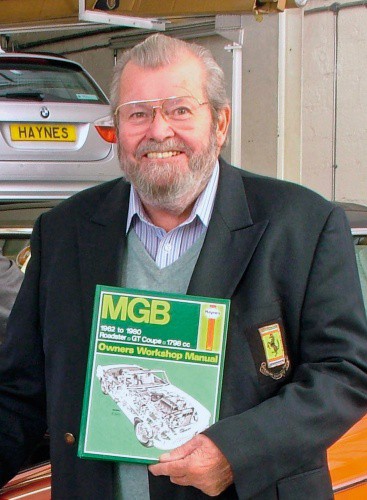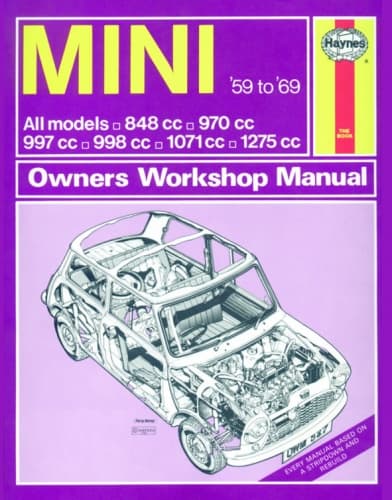Even if you didn't know his Christian name, chances are that the mere mention of John Haynes will bring one of his eponymous maintenance manuals to mind. Such is the far reaching influence of the man who passed away earlier this month, at the age of 80.

If, by some fluke, you remain ignorant of them then let me tell you that they are a series of hard backed books, A4 in size with each giving a step by step guide to maintaining a particular car. They came about when, in the late 1950s, Mr Haynes realised that the factory manuals were only suitable for trained mechanics and therefore of little use to the growing number of people running older vehicles on a shoe string. Reliant only upon their own wits and skills to keep them on the road.
I remember being aware of this extensive polychromatic self-help library whilst growing up, but of course bought my first book (second hand) when I got my first car – a 1300 Vauxhall Viva (also second hand). Part of the excitement of fledgling car ownership was digging through the manual to understand how it all worked.
These indispensable tomes have given who knows how many people the confidence to take their first steps into the world of practical engineering
Although I've never reached the dizzy heights of full rebuilds I have carried out my fair share of oil changes, suspension fixes and replacement of head gaskets. These were carried out on the drive and on the road side, the latter having the added thrill of passing cars ruffling your hair whilst you were lying flat out reaching up into the nether regions of the engine bay. Such is their worth that it is very rare to find a Haynes manual, other than a brand new one, that is not covered in oily finger prints.
The whole culture of DIY car maintenance was, and is, engineering in one of its most accessible and enjoyable forms. Whether it is an activity undertaken through choice or (as was more often the case “back in the day”) financial necessity this is a way of understanding basic, and not so basic, principles in real terms. Apart from how an internal combustion engine works there's also gear boxes, springs and dampers, electric circuitry, hydraulic systems, standardisation of parts and so on. In later years the remit for the publications has expanded with numerous volumes on, amongst other things, various1980s Grand Prix cars and WW2 aircraft; but crucially they still focus very much on the technical aspects of the subject matter.

I suspect that the growing general affluence of society coupled to the increased sophistication of cars is eroding the traditional Haynes business model, which no doubt goes some way to explaining the need for the company to start pushing into different markets. Perhaps there will be a small redress as more folk are able to indulge their dream of owning a classic car and, as a hobby rather than a necessity, seek out the chance to cherish the increasingly rare opportunity of experiencing the satisfaction that comes with fixing something yourself. We shall see.
I think that the legacy of the Haynes manual reaches further though. These indispensable tomes have given - who knows how many people - the confidence to take their first steps into the world of practical engineering. Odds are that there will be someone who can trace their career back to tackling a job armed with their trusty Haynes but the more likely scenario is that it helped a nascent engineer to clarify what they wanted to do with their life. The joy of making something work opening their eyes to a potential future within our industry. John Haynes may not have revolutionised our profession but through his books he did have an influence on a great many of us. Enough cause then, I would suggest, to take a moment to mark his passing.
John H Haynes OBE (25th March 1938 - 8th February 2019) was the creator of the famous Haynes manual, founder of the Haynes Publishing Group and the Haynes International Motor Museum.











Water Sector Talent Exodus Could Cripple The Sector
One possible reform to the Asset Management Plan (AMP) system would be to stagger the five year cycle across the ten or so water businesses, so that...